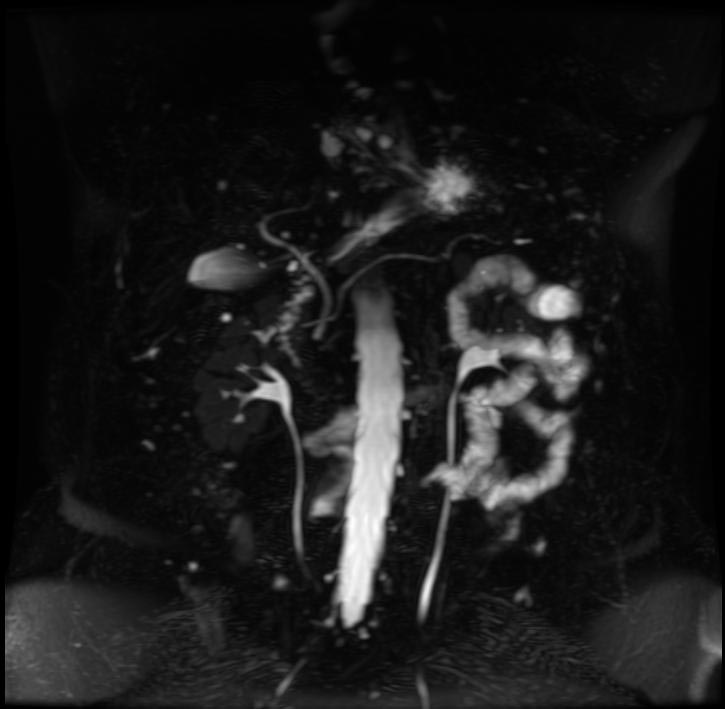Pancreas divisum
| Pancreas divisum | |
 | |
|---|---|
| MRCP: Pancreas divisum. Image courtesy of RadsWiki |
|
Pancreas Divisum Microchapters |
|
Diagnosis |
|---|
|
Treatment |
|
Case Studies |
|
Pancreas divisum On the Web |
|
American Roentgen Ray Society Images of Pancreas divisum |
For patient information page on this topic, click here.
Editor-In-Chief: C. Michael Gibson, M.S., M.D. [1]; Associate Editor(s)-in-Chief: Cafer Zorkun M.D., PhD.
Overview
Pancreatic divisum is a congenital anomaly in the anatomy of the ducts of the pancreas in which a single pancreatic duct is not formed, but rather remains as two distinct dorsal and ventral ducts. [1] [2]
- Variant of the pancreatic ductal system and occurs in 4%–10% of the population.
- Dorsal and ventral anlagen of the pancreas fail to fuse.
- The dorsal duct drains most of the glandular parenchyma through the minor papilla
- The smaller ventral duct drains a portion of the pancreatic head, including the uncinate process, through the major papilla.
- Clinical relevance of pancreas divisum remains controversial.
- Most patients with pancreas divisum are asymptomatic.
- In some patients, this anomaly is associated with recurrent episodes of pancreatitis.
- Postulated that in pancreas divisum, the duct of Santorini and the minor ampulla are too small to adequately drain the secretions produced by the pancreatic body and tail.
Symptoms
Diagnosis
The most common and accurate way of diagnosing an individual with this anomaly is by an ERCP. This test can demonstrate the presence of two separately draining ducts within the pancreas. Other tests can assist doctors with diagnosis, such as a CT scan and an MRI.
Treatment
References
- ↑ Jorge A. Soto, Brian C. Lucey, and Joshua W. Stuhlfaut. Pancreas Divisum: Depiction with Multi–Detector Row CT. Radiology 2005 235: 503-508.
- ↑ Yu, Jinxing, Turner, Mary Ann, Fulcher, Ann S., Halvorsen, Robert A. Congenital Anomalies and Normal Variants of the Pancreaticobiliary Tract and the Pancreas in Adults: Part 2, Pancreatic Duct and Pancreas. Am. J. Roentgenol. 2006 187: 1544-1553.
Related Chapters
External Links
Template:Congenital malformations and deformations of digestive system